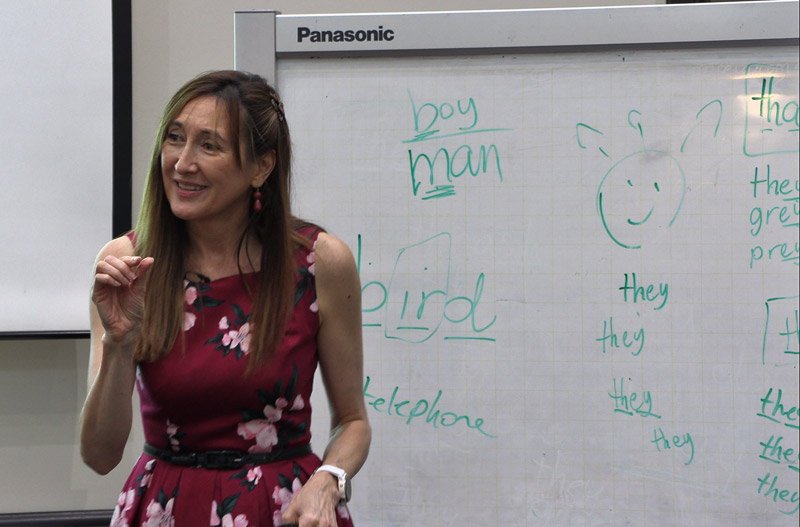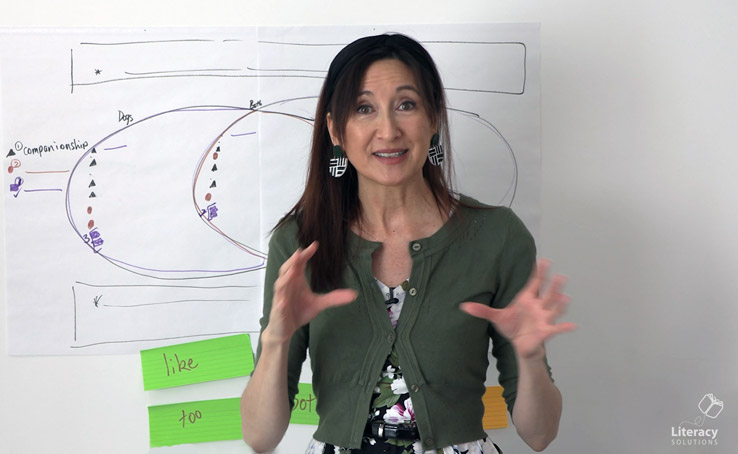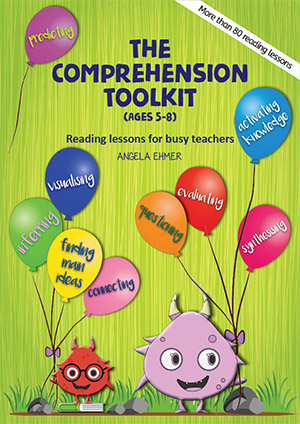Archive for 2016
Tuesday, 14 June 2016 at 10:21 am
In problem/solution texts, the author presents a problem and one or more potential solutions. Only one significant problem and solution may be presented in simpler texts. In longer, more complex texts there may be one main or overarching problem, in addition to one or multiple smaller complications, all or most of which are usually resolved. Some texts feature multiple complications which together create one main …
Tags: graphic organisers, problem/solution
Continued... | Posted in Literacy general, Reading, Writing | Comments Off on Problem/Solution (Part 7 of 7)
Sunday, 5 June 2016 at 10:57 am
In a description the author describes, lists, explains or highlights attributes, features and characteristics of people, things or places. In body paragraphs there may be one main, or central idea, which can be identified by locating a topic sentence or summary sentence, or by inferring a connection between ideas across sentences. Examples, analogies, explanations or elaborations provide details about the significant idea. A description, …
Tags: graphic organisers, List/Description
Continued... | Posted in Literacy general, Reading, Writing | Comments Off on List/Description (Part 6 of 7)
Monday, 30 May 2016 at 7:50 am
When comparing/contrasting an author shows how two or more elements are alike and different. When the items are compared, their similarities are explored; when they are contrasted, their differences are highlighted. Some texts only compare and are therefore comparing texts; some texts only contrast and are therefore contrasting texts. Texts which do both are considered compare and contrast.
Signal words:
advantage, although, as opposed to, as well …
Tags: compare/contrast, graphic organisers
Continued... | Posted in Literacy general, Reading, Writing | Comments Off on Compare/Contrast (Part 5 of 7)
Thursday, 19 May 2016 at 7:59 am
Cause/Effect is used to show how one thing causes another thing to happen, or how more than one thing occurs as a consequence. A cause may result in one, or many effects. Therefore, causal relationships can be simple or complex.
Within paragraphs, an author may choose to give reasons which explain why something happened; he or she is explaining the effect or effects of a cause. …
Tags: Cause/Effect, graphic organisers
Continued... | Posted in Literacy general, Reading, Writing | Comments Off on Cause/Effect (Part 4 of 7)
Tuesday, 10 May 2016 at 8:53 pm
In a chronological sequence the author uses the order of events, or chronology, to inform readers about events or content. The events may be organised by time or date, by arranging events as a series of steps or by following a list-like structure. Chronological sequencing is commonly used in nonfiction texts. In nonfiction, there are usually clear time markers such as dates or times of …
Tags: chronological, graphic organisers, time-order sequence
Continued... | Posted in Literacy general, Reading, Writing | Comments Off on Chronological/Time-Order Sequence (Part 3 of 7)
Wednesday, 4 May 2016 at 9:41 am
Graphic Organisers: Part 2 of 7
Top-Level Structures (T.L.S.) are cognitive frameworks which help us to organise information. Put simply, they are frameworks for organising ideas to make them easier to understand, notice relationships between and across ideas or elements and for categorising and integrating new information with what is already known. In reading, top-level structures help us to make sense of an author’s ideas; in …
Tags: graphic organisers, top level structure
Continued... | Posted in Literacy general, Reading, Writing | Comments Off on Top Level Structure (Part 2 of 7)
Tuesday, 26 April 2016 at 8:33 am
Graphic Organisers: Part 1 of 7
Graphic Organisers have been shown to be effective tools for assisting readers to comprehend and writers, or speakers, to organise ideas. They provide an interactive visual structure for showing connections and relationships between ideas, facts and concepts. By using these visual representations, elements can be sorted, categorised, organised, reorganised and sequenced to promote understanding and retention when reading …
Tags: graphic organisers, top level structure
Continued... | Posted in Literacy general, Reading, Writing | 2 Comments »
Tuesday, 19 April 2016 at 8:19 am
Our Graphic Organisers (blackline masters) have just been uploaded to this site for use by Teachers. A series of blogs over the next few weeks will support the use of these Graphic Organisers. Topics will include:
Graphic Organisers
Top Level Structures
Chronological/Time-Order Sequence
Cause/Effect
Compare/Contrast
List/Description
Problem/Solution
We hope you can make positive use of these resources.
Tags: black line masters, graphic organisers
Continued... | Posted in Literacy general, Reading, Writing | Comments Off on Graphic Organisers (Blackline Masters)




